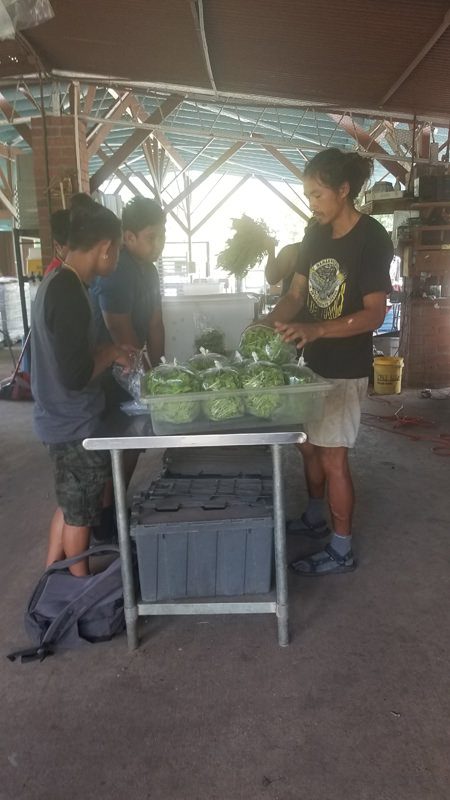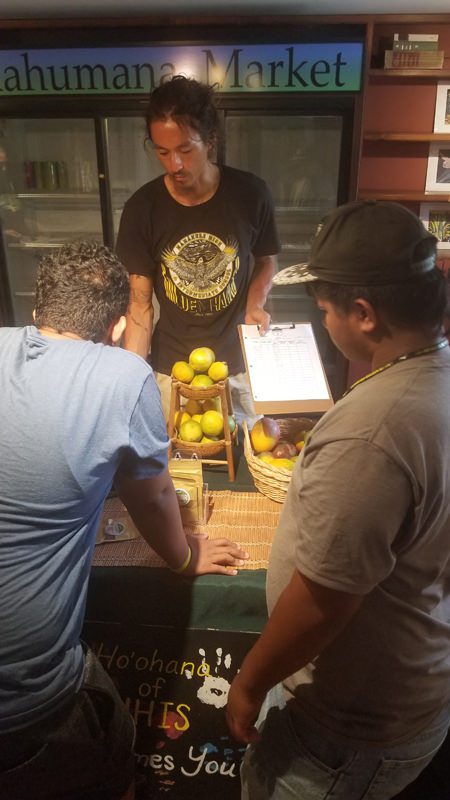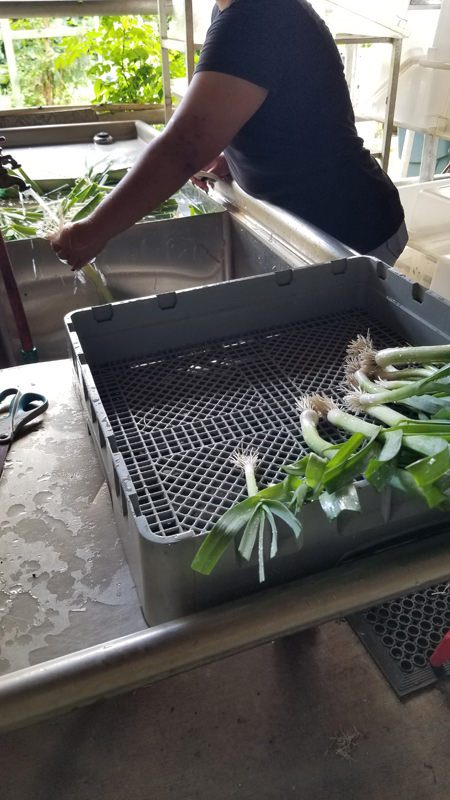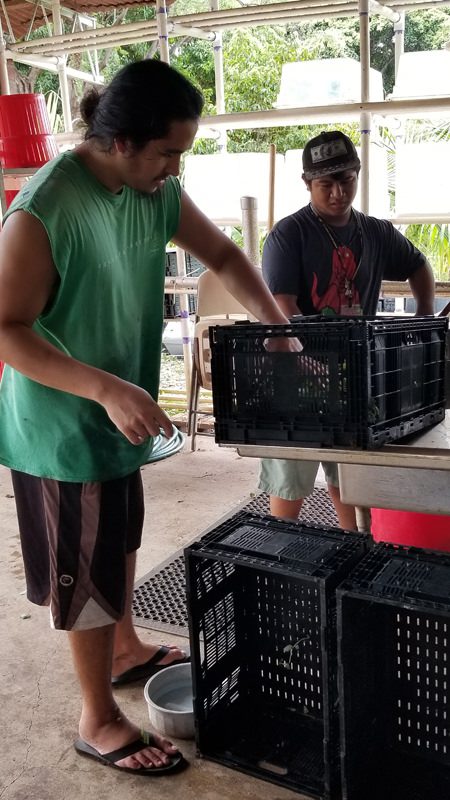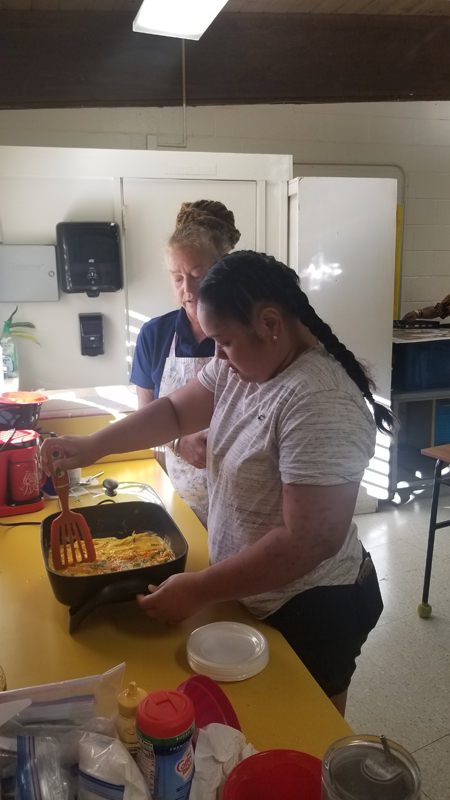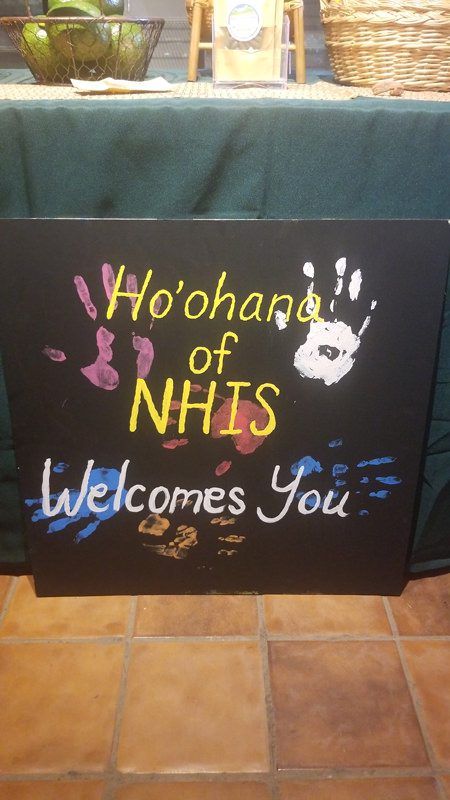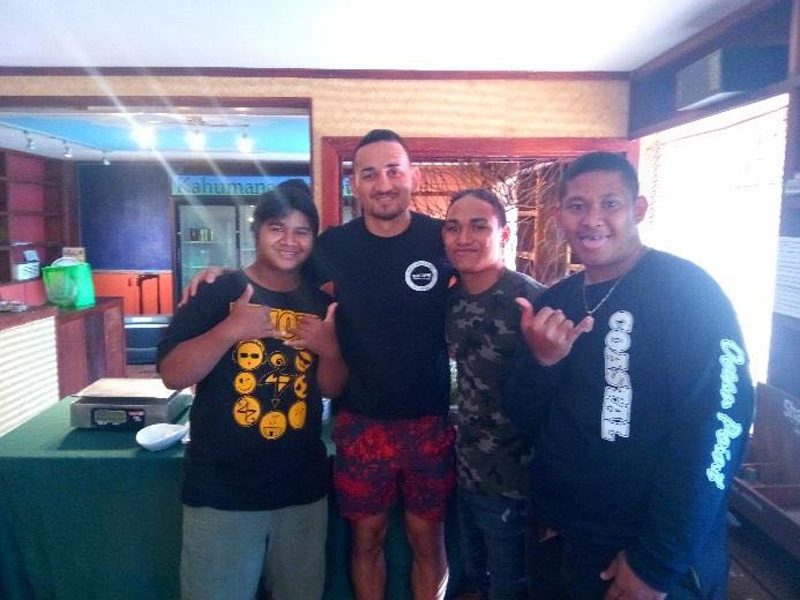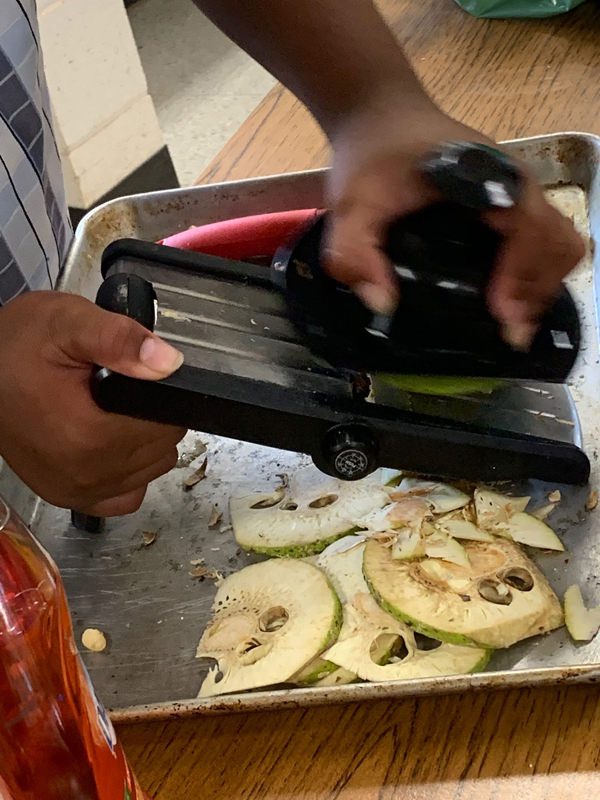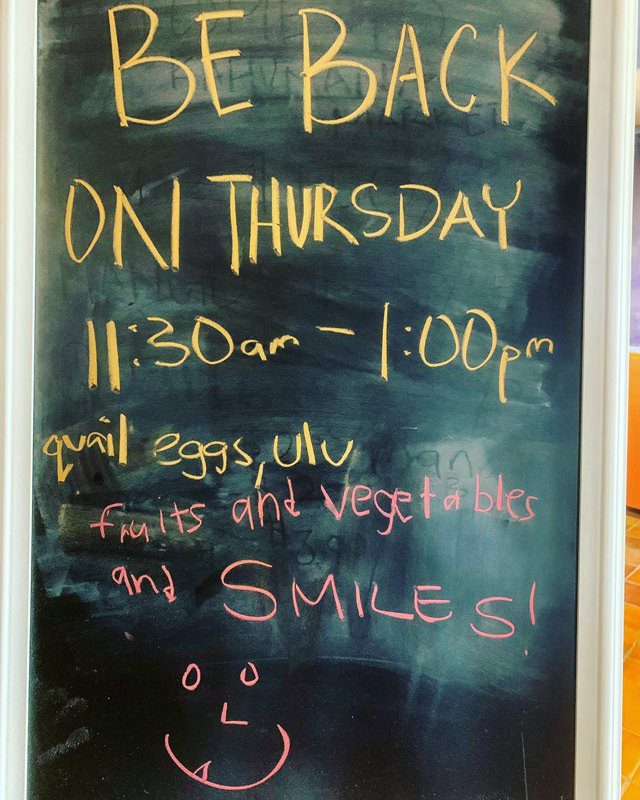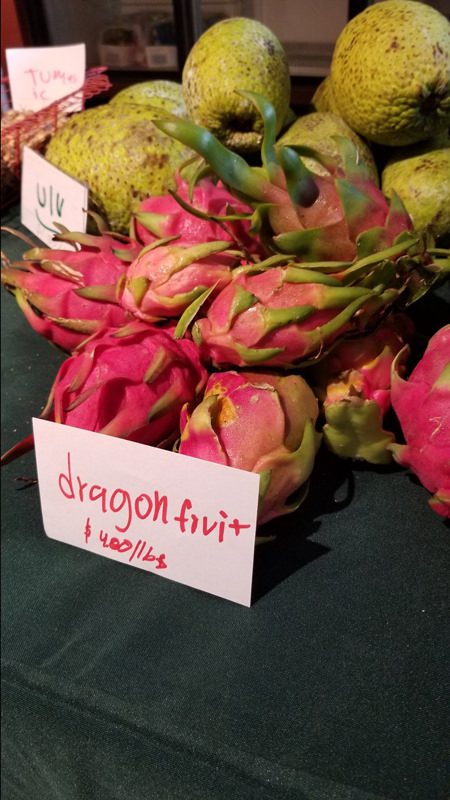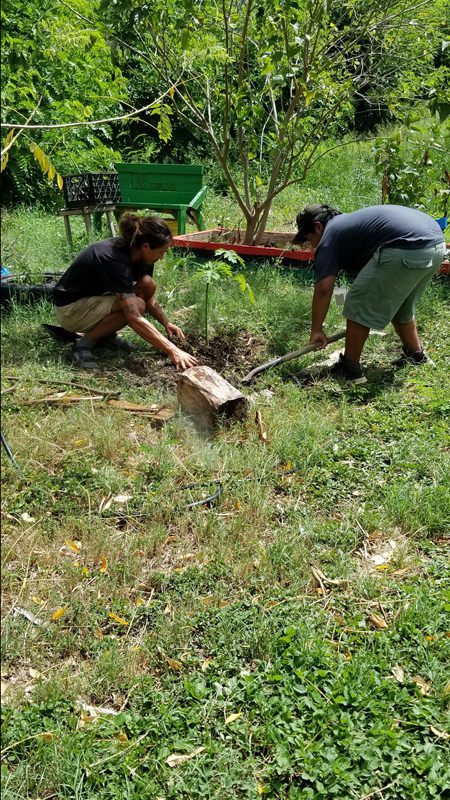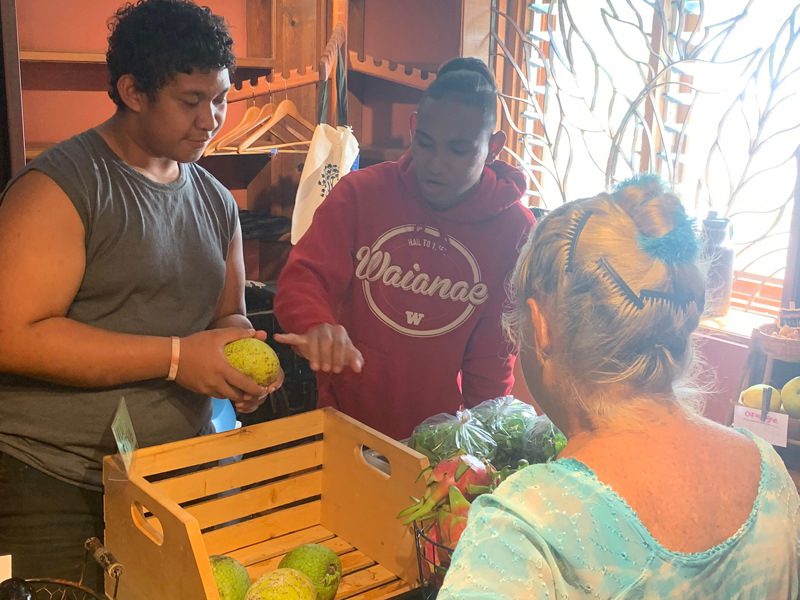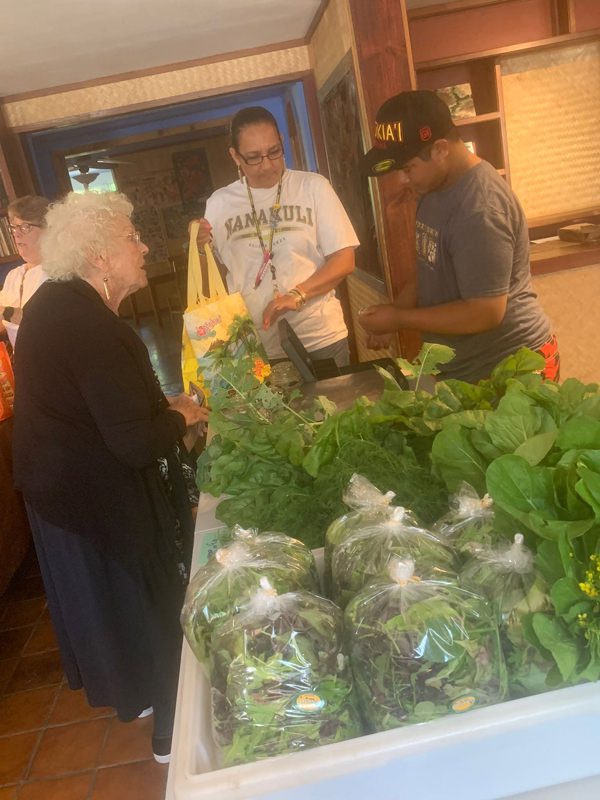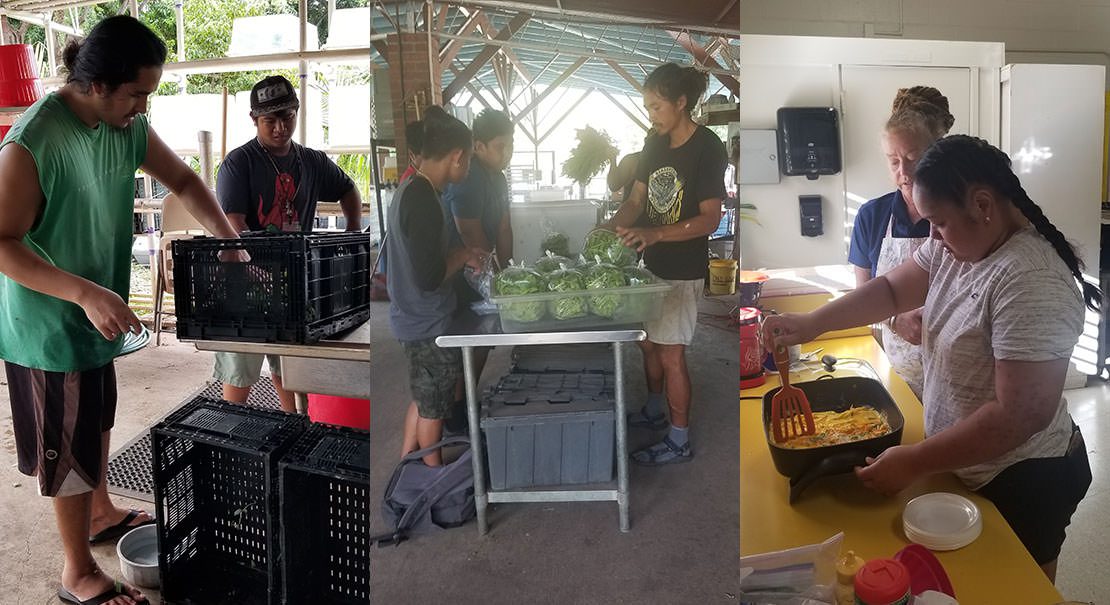
School: Nānākuli High & Intermediate School
Grade Level: 9-12
Teacher: Josephine Salas-Nakashima, Shavana Ventura (EA)
Driving Question: How can we create a product to inform the community about Kahumana Market re-opening?
What did the students do?
The Kahumana Organic Farm (KOF) Farmers Market project provided students in the Ho’ohana Program at Nānākuli High School with an authentic learning experience to apply their math, writing, and oral communication skills. Students took weekly trips to Kahumana Organic Farm & Cafe to open and run the farmers market that was set up outside of the Cafe. The Farmers Market project provided an authentic learning experience to apply their math, writing, and oral communication skills. In order to successfully run the market, students calculated weight and cost, made the change from customer purchases, engaged with customers by greeting them and informing them about the produce, and followed directions from the farmers in order to best assist them when working in the Wash Station. To prepare for the weekly market, their teacher, Josephine Nakashima, led in-class activities to practice using complete sentences when speaking to others and to address math content and skills, such as making change, using scales, addition, and subtraction.
By the end of the Third Quarter, the Ho’ohana Program has raised $1,166. for Kahumana Organic Farm.
Place-Based Field Experiences/Connections
Additionally, the project served as a job for the students for which they are paid through the Division of Vocational Rehabilitation (DVR). They were required to sign in and out and to complete documentation for the day, such as taking inventory and recording earnings after counting the cash drawer. Students listened to and followed instructions from the farmers in the Wash Station and their Supervisor, Travis, in the Market in order to best prepare for the day. Connection to this place through service, communication with its people, and even tasting the food allowed the students to foster a greater relationship with it and therefore make deeper connections to what they are learning in the classroom. As a group, Ho’ohana became more responsible and came to feel like they were a genuine part of the function of the farm.
However, the best data on the impact this project has had comes from the stories of the students’ improved confidence and sense of belonging, increased level of ownership and responsibility, and strengthening as a group. This was demonstrated both on the farm and inside the classroom:
- Johneen struggled to count coins and do mental math, but applying these skills in relation to the real-life experience of providing change for the woman who just purchased the arugula that she washed and bagged for the Market challenged her to find purpose in developing that skill. Johneen reached her goal of being to do mental math and make a change for customers without using a calculator by the end of the Third Quarter.
- Season, an English Language Learner (ELL), often felt uncomfortable talking casually with his peers or adults, but grew to be more confident greeting customers and educating them about the Market as he got more comfortable in his leadership role in that place. Specifically, he liked to share his cultural connection to the products, such as how his Chuukese family prepares ʻulu.
- Deyon was challenged to work on his spelling as he wrote the Market Menu and created signage for the tables. In doing so, he learned about a variety of produce that he previously was unfamiliar with. He continued to develop and demonstrate true leadership in the group, taking initiative, helping out without being asked to, and holding his peers accountable for their work.
- Izaiah absolutely loved going to the farm and grew to feel more comfortable working in either the Market or the Wash Station.
The biggest challenge faced in this project was the slower times in the Market. Since the group split between the Wash Station and the Market each week, those in the Market would often have long periods of “downtime”. After talking with their teacher to think through solutions, we decided to rotate one student every thirty minutes to allow them to work in both locations on the farm each week. For example, if Season and Izaiah started in the Market at 10:30 am, one of them would head down to the Wash Station at 11:00 am to swap with one of the students who started there. Additionally, all students would help to set up the Market before splitting up when it opened at 11:00 am. This proved to be an effective solution.
An opportunity arose in January for us to incorporate more healthy snacks, beyond doing tastes at the farm on Thursdays. A new staff member, Terri Langley, joined our PLACES team and has lots of farm-to-table cooking experience. She was able to visit the classroom and do two cooking lessons with the students using produce from Kahumana Organic Farm. Although they were shy at first, the students really enjoyed their breakfast omelets!





